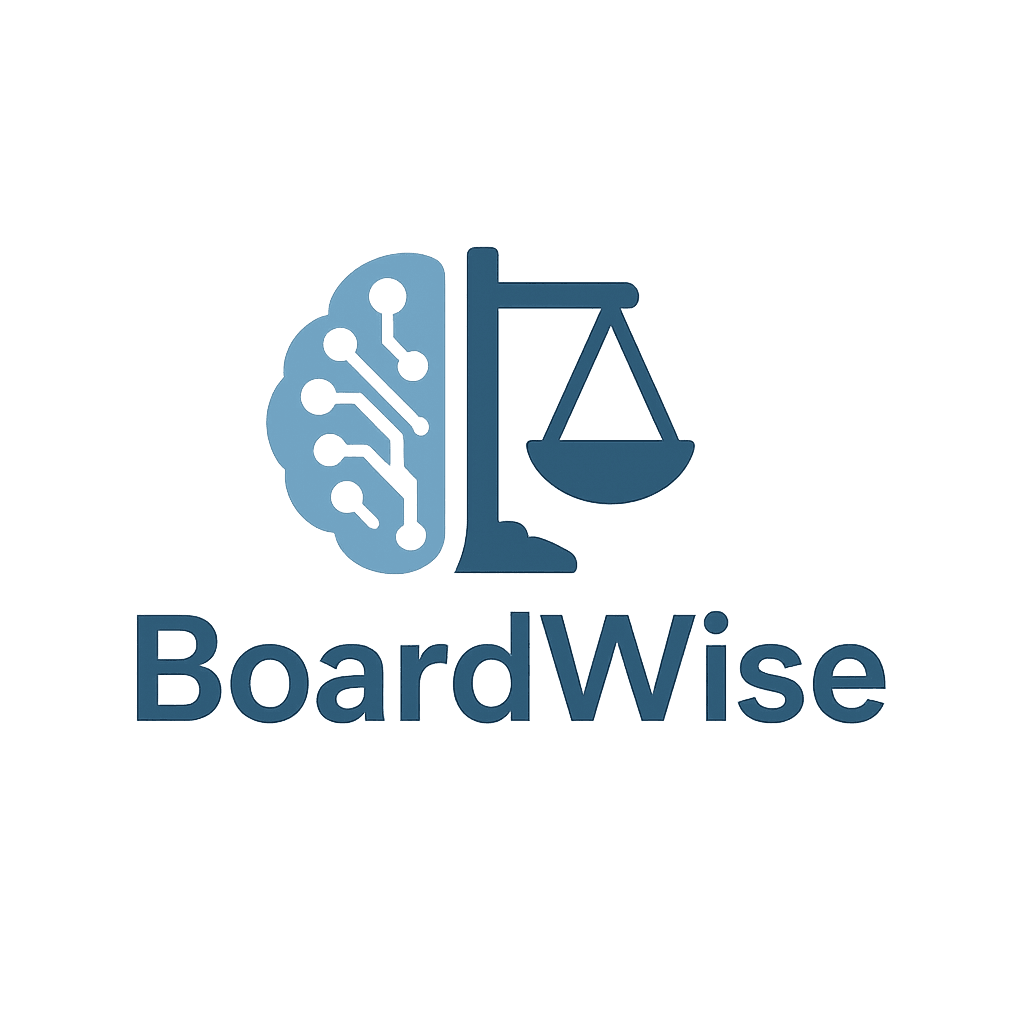Stress Begets Complaints: Why Today's Working Conditions are Fueling Licensing Chaos
Matt
Founder of BoardWise

Nurses and other licensed professionals are operating under unprecedented stress. That pressure correlates with a higher risk of errors and boundary slips, which in turn drives more complaints, investigations, and discipline. At the same time, complaint volumes and complexity are rising while many boards remain constrained by staffing and funding. This piece unpacks the structural drivers behind the trend and how professionals can respond.
What's driving the spike
1. Chronic stress and burnout elevate risk
A large 2024 meta-analysis found nurse burnout is associated with more medication errors, patient falls, adverse events, and lower safety climate and quality of care—risk factors that translate into complaint exposure (Li et al., 2024). Current workforce data show burnout and intent-to-leave remain high even as workloads have only modestly improved since the pandemic (National Council of State Boards of Nursing [NCSBN], 2025; Smiley et al., 2025). When fatigue, short staffing, and moral distress converge, complaint probability rises—especially around documentation, scope of practice, and conduct. (Li et al., 2024; NCSBN, 2025; Smiley et al., 2025).
2. Case complexity is climbing
Care models have shifted quickly: telehealth across state lines, team-based care with intricate collaboration rules, proliferating medical spa services, and heightened scrutiny of controlled-substance access. State data illustrate the mix changing on the ground. In Nevada, "beyond scope of practice" complaints more than doubled year-over-year, and "collaboration/coordination of care" issues rose sharply; controlled-substance diversion also increased (Nevada State Board of Nursing, 2024, pp. 27–30). Boards also report more complaints tied to med-spa settings and evolving delegation/supervision rules, creating overlapping jurisdiction among multiple regulators (Illinois Department of Financial and Professional Regulation, 2024; Kansas State Board of Nursing, 2024). Cross-border practice adds coordination demands via Nursys, the national licensure and discipline database (NCSBN, n.d.).
3. Volumes are up, but infrastructure is thin
Boards are processing more—and thornier—matters without proportionate staffing growth. Nevada's report documents sustained high investigation volume; even after adding an investigator, the prior year's median days to case review was 127 (with improvement only after staffing adjustments) (Nevada State Board of Nursing, 2024, p. 28). Other jurisdictions have faced backlogs and protracted investigations with patient-safety implications (Hopkins, 2023). Many boards are primarily fee-funded, which caps hiring flexibility during surges (Minnesota Board of Nursing, 2025).
4. Representation gaps and rising defense costs
Administrative proceedings rarely guarantee counsel, and many licensees navigate hearings pro se. ACUS has documented that self-represented parties are common in administrative hearings and face procedural hurdles that undermine fairness and efficiency (Administrative Conference of the United States [ACUS], 2016). Meanwhile, private-market legal costs have climbed: recent national data show average lawyer rates commonly in the $300–$400 per hour range, with steady year-over-year increases (Clio, 2024; Thomson Reuters Institute, 2024). In rural "legal deserts," access is even scarcer—about 1,300 U.S. counties have fewer than one lawyer per 1,000 residents (American Bar Association [ABA], 2020; ABA, 2023). For lower-income professionals, affordability is a real barrier; the national Justice Gap study reports 92% of serious civil legal problems among low-income Americans get no or insufficient legal help, with cost a leading reason (Legal Services Corporation [LSC], 2022).
5. Economic inequality and disparate impacts
Broader affordability and access-to-justice metrics are trending poorly. The World Justice Project ranks the United States low on civil justice accessibility and affordability among high-income countries, underscoring systemic barriers for non-wealthy respondents (World Justice Project [WJP], 2024). Emerging scholarship and state analyses in medical discipline suggest potential racial disparities in complaint rates and sanctioning for physicians; nursing discipline data by race remain limited, calling for more transparency (California Research Bureau, 2021; Simas, 2016). Equity concerns matter because uneven complaint intake and sanctioning can amplify workforce attrition in already stressed settings (WJP, 2024; California Research Bureau, 2021).
The flywheel: stress → complaints → chaos → discipline
Under sustained pressure, error risk rises; more events generate more reports; investigators inherit heavier, more complex caseloads; timelines lengthen; and the system's perceived fairness erodes, which drives even more defensive practice, departures, and burnout. Without proportional investment in investigators, analysts, case managers, and hearing capacity—and without clearer, harmonized practice rules—the flywheel keeps spinning (Nevada State Board of Nursing, 2024; Hopkins, 2023; ACUS, 2016).
What boards and professionals can do now:
For boards
- Publish clear triage standards, aging dashboards, and service-level targets to keep timelines visible and accountable.
- Expand early-resolution pathways for low-risk conduct and first-time documentation lapses.
- Invest in complaint-type specialists (e.g., med-spa, telehealth, diversion) and increase coordination via Nursys for multistate matters (NCSBN, n.d.).
- Pilot navigation assistance for self-represented respondents in line with ACUS recommendations (ACUS, 2016; NCSBN, n.d.).
For professionals and employers
- Map your top three complaint vectors. For most acute settings: documentation gaps, collaboration misfires, and scope/standing orders. Use monthly peer review against those metrics, not just global incident reports (Nevada State Board of Nursing, 2024).
- Standardize response kits. Pre-assemble a response playbook: who leads, record holds, timeline tracker, template affidavits, and exhibits checklist.
- Invest in stress reducers that lower complaints. Staffing stabilization, break adherence, and high-reliability handoff protocols are evidence-linked to fewer errors that trigger complaints (Li et al., 2024).
- Budget for representation early. If external counsel is unaffordable, pre-identify lower-cost advisory options, legal clinics, or group-purchased defense benefits. Consider joining organizations that offer administrative-law helplines.
How to structure your response to a complaint
1. Triage the notice
- Deadline and requested items
- Issues list by rule citation
- Conflict check and communications plan
2. Fact foundation
- Timeline built from primary records, not memory
- Source log for each factual assertion
- Variance table for any documentation discrepancies
3. Standards and scope
- Nurse Practice Act provisions, delegation/collaboration rules, and standing orders in effect on the date of care
- If multi-state, pull Nursys licensure/discipline status and reciprocity context (NCSBN, n.d.).
4. Mitigation and systems fixes
- Immediate corrective actions, education, and supervision changes
- Human-factors analysis tying stressors to risk controls (staffing, breaks, handoffs)
5. Proportionality argument
- Link facts to sanction guidelines and early-resolution eligibility
- Emphasize remediation completed and monitoring you'll accept
6. Attachments and attestations
- Exhibits labeled and paginated
- Attestation of completeness and contact point for follow-ups
Key takeaways
- Stress correlates with complaint risk; reducing burnout is a compliance strategy, not just a wellness perk (Li et al., 2024).
- Complaint types are shifting toward scope/collaboration, diversion, and emerging settings like med spas, increasing complexity (Nevada State Board of Nursing, 2024).
- Many boards face capacity constraints; transparency, triage, and early resolution can relieve bottlenecks (Hopkins, 2023).
- Access to counsel is uneven and expensive; plan for representation or navigation assistance before you need it (ACUS, 2016; Clio, 2024; LSC, 2022).
Call to action
BoardWise helps you draft compliant responses at lightning speed. If you're staring at a deadline, we'll help you frame the facts, cite the right rules, and present remediation clearly—so boards can resolve, not escalate.
Get Started with BoardWiseReferences
Administrative Conference of the United States. (2016). Self-represented parties in administrative hearings: Final report. https://www.acus.gov/document/self-represented-parties-administrative-hearings-final-report
American Bar Association. (2020, July 22). New ABA Profile of the Legal Profession report shines light on legal deserts. Read ABA Report
American Bar Association. (2023, Nov. 14). Preventing legal deserts in our rural communities. https://www.americanbar.org/groups/litigation/resources/newsletters/childrens-rights/fall2023-preventing-legal-deserts-in-our-rural-communities/
California Research Bureau. (2021). Demographics of disciplinary action by the Medical Board of California. https://www.library.ca.gov/wp-content/uploads/2021/08/MedicalBoardDemographicsJan17.pdf
Clio. (2024). 2024 Legal Trends Report. View Legal Trends Report
Hopkins, E. (2023, June 21). Minnesota lets nurses practice while disciplinary investigations drag on. Patients keep getting hurt. ProPublica. https://www.propublica.org/article/minnesota-nurses-complaints-discipline-medical-boards
Illinois Department of Financial and Professional Regulation. (2024). Nursing notices: Medical spa services memo. https://idfpr.illinois.gov/profs/nursing.html
Kansas State Board of Nursing. (2024, March 11). Practice Committee agenda highlights. https://ksbn.kansas.gov/wp-content/uploads/2024/03/Practice_Committee_March_2024.pdf
Legal Services Corporation. (2022). The Justice Gap: The unmet civil legal needs of low-income Americans. Read Justice Gap Report
Li, L. Z., Tse, J. K. Y., Harel, O., Rocco, G., & others. (2024). Nurse burnout and patient safety, satisfaction, and quality of care: A systematic review and meta-analysis. JAMA Network Open. https://pmc.ncbi.nlm.nih.gov/articles/PMC11539016/
Minnesota Board of Nursing. (2025). Fees and budgets overview. https://mn.gov/boards/nursing/about/fees/
National Council of State Boards of Nursing. (2025, Apr. 17). Research highlights small steps toward nursing workforce recovery; burnout and staffing challenges persist. Read NCSBN Research
National Council of State Boards of Nursing. (n.d.). License verification and Nursys overview. https://www.ncsbn.org/nursing-regulation/licensure/license-verification.page; https://www.nursys.com/
Nevada State Board of Nursing. (2024). Annual report FY2024. Selected pp. 8–9, 27–30. https://nevadanursingboard.org/wp-content/uploads/2024/09/2024-Annual-Report-FINAL.pdf
Simas, S. (2016). License discipline data shows racial bias. https://simasgovlaw.com/license-discipline-data-shows-racial-bias/
Smiley, R. A., et al. (2025). The 2024 National Nursing Workforce Survey. Journal of Nursing Regulation. Read Workforce Survey
Thomson Reuters Institute. (2024, Sept. 17). Law firm rates in 2024. https://www.thomsonreuters.com/en-us/posts/legal/law-firm-rates-report-2024/
World Justice Project. (2024). Rule of Law Index 2024: Civil justice rankings and affordability. https://worldjusticeproject.org/rule-of-law-index/downloads/WJPIndex2024.pdf; https://worldjusticeproject.org/rule-of-law-index/factors/2024/Civil%20Justice/; Civil Right to Counsel summary of U.S. affordability ranking. https://civilrighttocounsel.org/major_developments/u-s-rank-on-access-to-civil-justice-in-rule-of-law-index-116th-out-of-142-countries/
